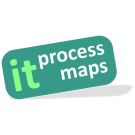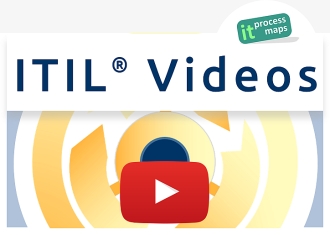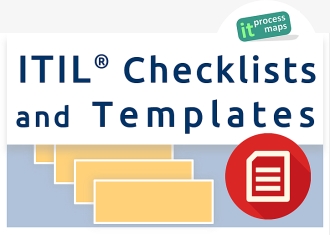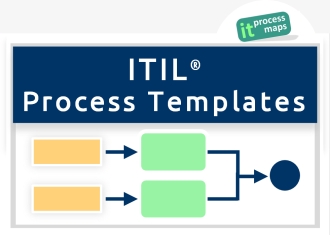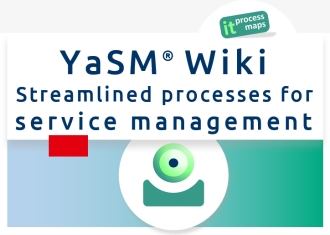ITIL 2011
<seo metakeywords="itil 2011, itil 2011 edition, itil 2011 vs. itil 2007, itil 2007 vs. itil 2011, itil 2011 2007" metadescription="This page provides more insights on what is new in ITIL 2011, the new ITIL edition that was published in July 2011." />

Four years after the introduction of ITIL® V3, the main guidance has been updated. This page highlights the changes and clarifications introduced with the new version ITIL 2011.
Why the new ITIL 2011 Edition?
ITIL 2011 takes into account feedback from the user and training community.
As the official ITIL Update FAQs [1] state, "ITIL 2011 is an update, not a new version". No entirely new concepts have been added, but the aim of the update is to "resolve errors and inconsistencies in the text and diagrams across the whole suite".
A new Naming Convention for ITIL Editions
As ITIL V2 is about to be phased out, the latest edition is now referred to as "ITIL 2011" or simply "ITIL", while the term "ITIL 2007" is used for the first edition of ITIL V3.
Differences between ITIL 2007 and ITIL 2011
An ITIL 2011 summary of the updates is available at the Official ITIL Website. This provides an overview of the main changes and their underlying motivations, but not a detailed account of what precisely has changed where in the books.

While no entirely new concepts have been added in ITIL 2011, at first sight it is obvious that the ITIL 2011 books are a lot thicker than the 2007 edition, so in fact a substantial amount of content has been added and it would be wrong to dismiss the modifications as merely 'cosmetical'.
There are a few new processes, while others are described in greater detail. Apart from these bigger changes, many clarifications and enhancements were introduced throughout all parts of the books on a smaller scale. As a result, it is (in our view) almost impossible to compare the two editions and come up with a detailed and complete list of all changes.
But we are able to highlight the more important differences. As we bring our ITIL Process Map and this ITIL Wiki in line with ITIL 2011, we record the modifications in a change log. We think the change log is the best information we can provide on what has changed in ITIL 2011, so we decided to publish it here as we gradually update to ITIL 2011.
ITIL 2011 Processes
Changes between ITIL 2007 and ITIL 2011 in Service Operation
Event Management
- Event Management has been updated to reflect the concept of 1st Level Correlation and 2nd Level Correlation.
- The process flows have been updated to reflect the more detailed guidance in the ITIL 2011 books.
Incident Management
- Guidance has been improved in Incident Management on how to prioritize an Incident, including the addition of a new checklist Incident Prioritization Guideline.
- Additional steps have been added to Incident Resolution by 1st Level Support to explain that Incidents should be matched (if possible) to existing Problems and Known Errors.
- Incident Resolution by 1st Level Support and Incident Resolution by 2nd Level Support have been considerably expanded to provide clearer guidance on when to invoke Problem Management from Incident Management. The emphasis is now on restoring services as quickly as possible, and to seek the help of Problem Management if the underlying cause of an Incident cannot be resolved with a minor Change and/or within the committed resolution time.
- Incident Closure and Evaluation now states more clearly that it is important to check whether there are new Problems, Workarounds or Known Errors that must be submitted to Problem Management.
Request Fulfilment
- The Request Fulfilment process has been completely revised to reflect the latest guidance. Request Fulfilment now consists of five sub-processes, to provide a detailed description of all activities and decision points.
- Request Fulfilment now contains interfaces with Incident Management (if a Service Request turns out to be an Incident) and Service Transition (if fulfilling of a Service Request requires the involvement of Change Management).
- A clearer explanation of the information that describes a Service Request and its life cycle has been added.
- The concept of Service Request Models is explained in more detail.
Access Management
- An interface between Access Management and Event Management has been added, to emphasize that (some) Event filtering and correlation rules should be designed by Access Management to support the detection of unauthorized access to services.
- A dedicated activity has been added to revoke access rights if required, to make this point clearer.
- It has been made clearer in the Request Fulfilment and Incident Management processes that the requester’s authorization must be checked.
Problem Management
- A new sub-process "Proactive Problem Identification" has been added to emphasize the importance of proactive Problem Management.
- In Problem Categorization and Prioritization, it has been made clearer that categorization and prioritization should be harmonized with the approach used in Incident Management, to facilitate matching between Incidents and Problems.
- The concept of recreating Problems during Problem Diagnosis and Resolution is now more prominent.
- Problem Diagnosis and Resolution has been completely revised to provide clearer guidance on how this process cooperates with Incident Management.
- The new ITIL 2011 books contain an expanded section on problem analysis techniques and examples for situations where the various techniques may be applied.
